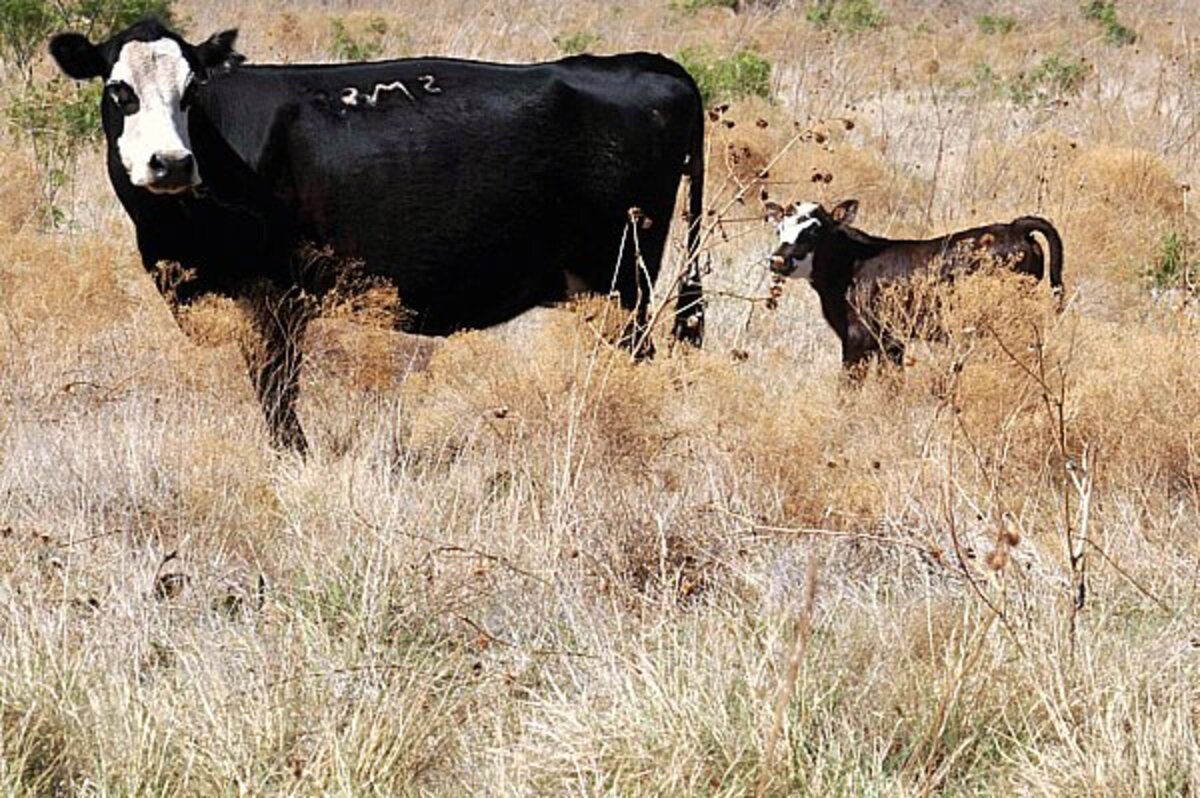Drought and wildfire threaten America's cattle capital
Loading...
| Chicago
As if the heartland hasn’t faced enough this summer, with wildfires, droughts, and punishing heat, cattle ranchers are now facing a hay shortage.
The triple-digit temperatures, expected to result in the worst drought north-central Texas has ever experienced, follows spring wildfires, which scorched millions of acres that traditionally nourish the nation’s largest steer population – five million head of cattle.
Most Texas pasture and range lands – 86 percent – are currently “poor” or “very poor,” according to the US Department of Agriculture’s National Agricultural Statistics Service. The same rating applied to 69 percent of Oklahoma and 40 percent of Kansas.
The hardships this year “don’t compare to any in recent years,” says Jason Miller, a county agriculture agent for the Texas AgriLife Extension Service (TALES). “The ranchers are just holding on.”
July temperatures have topped 110 degrees in the heart of cattle country, from Texas to Kansas. Ranchers complain that not only did the wildfires destroy the hay population, they also burned summer crops such as wheat or cotton, that usually can be counted on to support rural economies when there are dips in the cattle market.
Agriculture losses from the drought will tally $1.5 billion this year, according to estimates from TALES.
From October to June, most of Texas reported the driest season on record. In Beaumont, for example, a total of 8.80 inches of rain have fallen so far in 2011; the city’s normal accumulation by now is about 31 inches.
In Aspermont and other Texas towns, municipal water towers are being opened to farmers, as a last-ditch measure. “That thing’s been busy all day, every day,” says Stonewall County Judge Ronnie Moorhead. “We’ve been hot and dry for so long.”
Desperate ranchers face premium prices to import hay from out of state. Some are accepting donations, and the Texas Department of Agriculture has set up a hotline to streamline the process. Last week, Republican Gov. Rick Perry directed the state’s Department of Transportation to waive permitting restrictions for transporting hay bales into and within the state.
Some ranchers are resigned. “There’s no hay here. If you don’t have old hay you’re not going to have hay production here,” says Holly McLaury, whose family operates a 1,400-acre ranch in Stonewall County, Texas. The wildfires scorched about 80 percent of her grazing land. Emergency helicopters fighting the fires drained her water tanks in just two days.
Most say the cattle are not yet starving, although it could happen by fall. Judge Moorhead says most ranchers in the area will have sold their livestock by then. Selling early has some advantages: heavier cattle fetch higher prices, plus it forestalls the suffering of starvation.
“Most of these are family operations that have been in the business generation after generation. They have a real feel for the animals,” he says. “They’re not going to hang onto [the cattle] to the point of cruelty.”
So far, cattle prices have remained stable, which has some ranchers cashing in. Producers Livestock Auction in San Angelo, for instance, reports that its cattle pens are twice as full this month as this time last year.
Most remain uncertain whether and when to sell, says Mr. Miller, because it depends on how much money they have in reserves and how the weather fares through the rest of the summer.
“[Ranchers] are at a point where they’re not sure what to do. It’s their livelihood. If they do sell off, they’re going to have to restock the ranches, so it’s a worry to sell out and then buy in at a higher price,” he says.
Ms. McLaury says she and her husband have not decided when to sell their cattle – though she admits regret for not selling “as soon as the fires quit burning.”
“We’re just scrambling,” she says. “It’s a toss-a-coin-in-the-air right now.”




